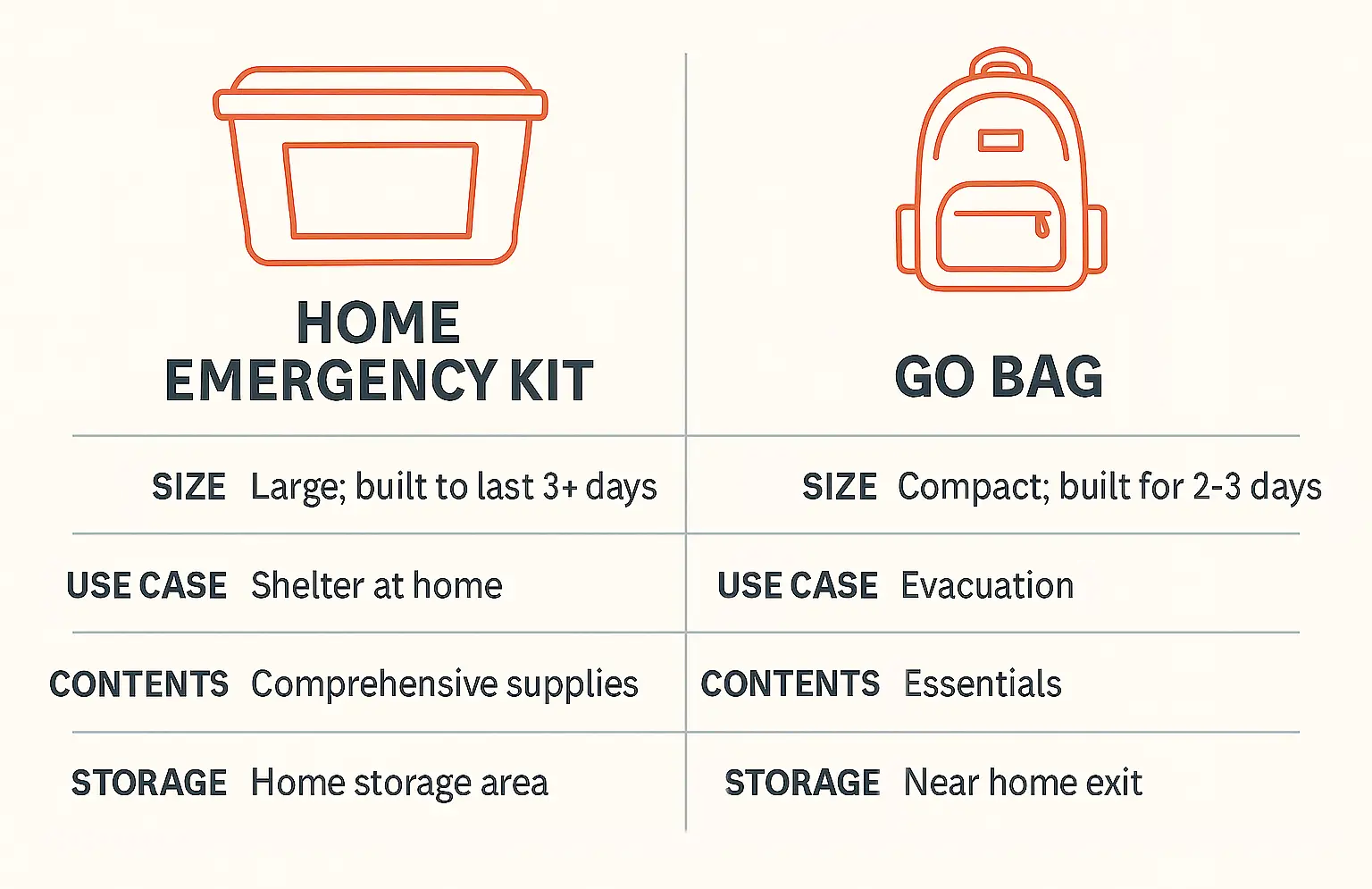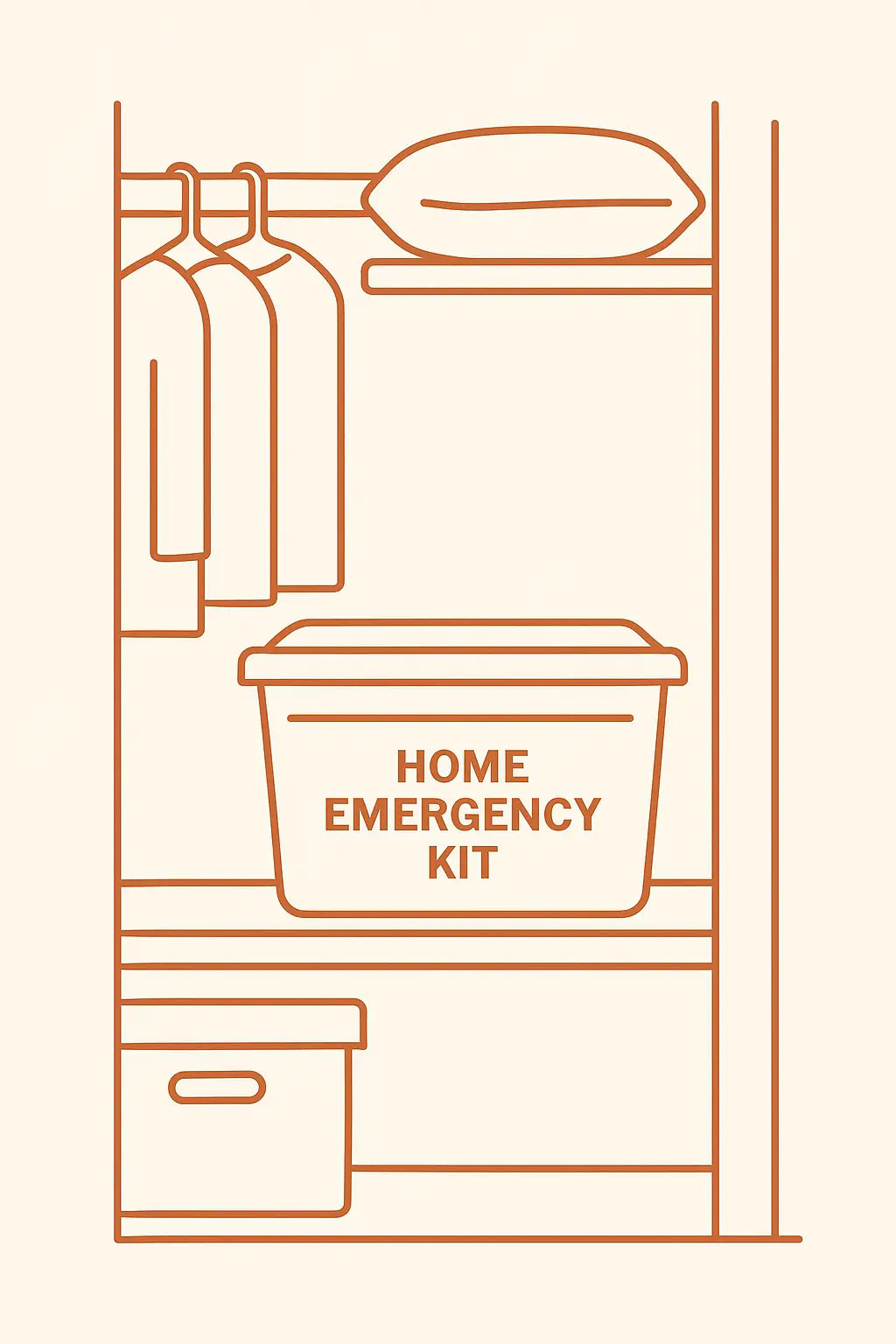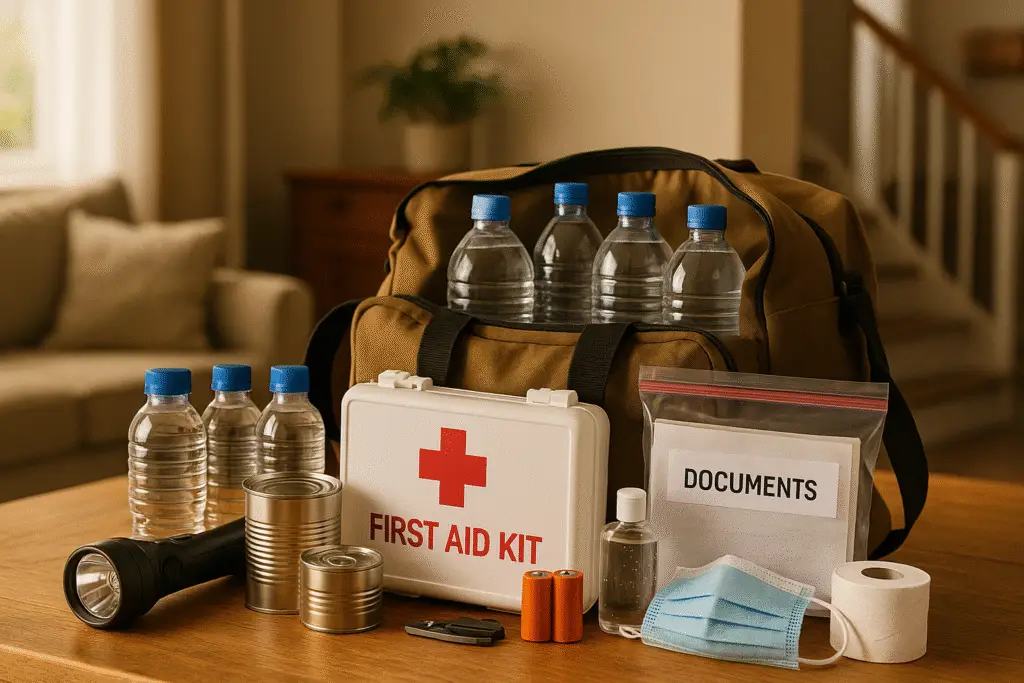When the lights go out—or worse—what’s your move? If you’re like most homeowners, you might scramble for a flashlight, then wonder where the batteries are. Or discover the canned goods in your pantry expired in 2017. Emergency kits are often an afterthought, but having a well-stocked one can make a world of difference when disaster strikes.
Whether it’s a power outage, wildfire evacuation, or severe winter storm, a home emergency kit keeps your household safer, calmer, and more self-sufficient. This guide focuses on the Home Emergency Kit — the one you store at home to shelter in place for at least three days. (We cover the Go Bag, or Bugout Bag, in a separate guide.)

Why Every Home Needs an Emergency Kit
Disasters rarely announce themselves. A storm can knock out power for days. A gas leak could force you to leave in minutes. Having supplies ready means you don’t have to rely on luck or last-minute decisions.
This type of emergency kit is meant for situations where you’re sheltering at home—not a long term survival kit. Think of short-term disruptions that can last hours or up to a few days like:
- Power outages that last more than a few hours
- Winter storms that trap you indoors
- Earthquakes that cut off access to stores and services
- Hurricanes or floods that delay emergency response
- Boil water advisories or utility shutdowns
You’re not prepping for the apocalypse—just making sure your household can function safely and independently for a few days until help arrives or services are restored.
An emergency kit gives you:
- Time: You can act fast instead of hunting for supplies
- Control: You’re better equipped to make good choices under stress
- Peace of mind: You’ll sleep easier knowing you’re prepared
The Essentials: What to Pack in Your Home Emergency Kit
FEMA recommends supplies for at least 72 hours per person. That’s a solid baseline. Here’s what that looks like:
Water & Food:
- 1 gallon of water per person, per day (for drinking and sanitation)
- Non-perishable food (canned, pouches, dry goods)
- Manual can opener
Light & Power:
- Flashlights or headlamps (plus batteries)
- Battery-powered or hand-crank radio
- Portable power bank or solar charger for phones
Health & Hygiene:
- First aid kit with bandages, antiseptic, gloves
- Prescriptions and basic medications (pain relievers, allergy meds)
- Moist towelettes, soap, hand sanitizer
- Toilet paper and plastic bags (for sanitation)
Safety Tools:
- Whistle (to signal for help)
- Wrench or pliers (to turn off gas/water if needed)
- Dust masks (for air quality issues)
Documents & Cash:
- Copies of important documents (ID, insurance, medical info)
- Local maps
- Small amount of cash in small bills
Customize for Your Household
Every family is different. Think about your needs:
- Babies/Toddlers: formula, diapers, wipes
- Pets: food, leash, medication, carrier
- Seniors: extra glasses, hearing aid batteries, medical devices
- Special Needs: extra equipment, sensory tools, dietary needs
Pro Tip: Include a comfort item like a small toy or snack. In a scary moment, a bit of normalcy can help everyone, especially kids.
Storage: Where to Keep It

The best emergency kit in the world won’t help you if it’s buried behind holiday decorations or tucked into a flooded basement. Your kit should be stored in a dry, easily accessible location that every household member can reach quickly—even in the dark or during a stressful situation.
Good options include a hall closet, mudroom shelf, or a garage cabinet—as long as the space stays dry year-round. Avoid attics or basements that are hard to get to, especially if you live in an area prone to flooding, mold, or temperature swings.
Pick one designated bin, label it clearly, and store it where you’re most likely to grab it when the power’s out or time is tight. You’ll also want to make sure it’s visible and not stacked behind heavier boxes—speed matters in an emergency.
While your Home Emergency Kit is meant for staying put, it’s smart to also prep a separate Go Bag (AKA Bugout Bag) for quick evacuations.
Keep It Ready: Maintenance Matters
A forgotten kit is a useless kit—just like a neglected furnace filter or overdue roof inspection. Emergency prep is part of smart home maintenance, not separate from it. Set a calendar reminder to:
- Check expiration dates every 6 months
- Rotate food, water, and meds as needed
- Update documents annually
- Adjust for seasons (add warm layers or cooling towels)
Watch Out: Don’t rely solely on candles for light—they’re a fire risk in chaotic situations. LED flashlights are safer and last longer.
Wrap-Up: A Little Prep Goes a Long Way
Emergencies are unpredictable, but your response doesn’t have to be. A well-prepped home emergency kit turns “panic mode” into “we’ve got this.” Start small if you need to. Even a basic kit is better than none.
Need help getting organized? Download AHA’s Home Emergency Kit Checklist to make packing and maintaining your kit easier.

